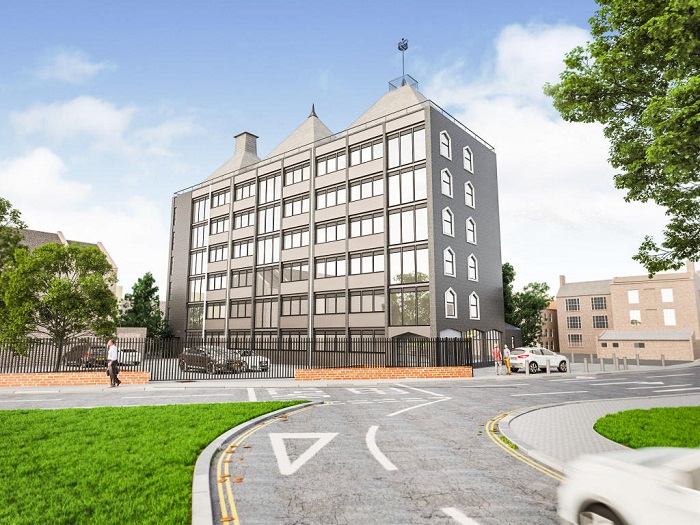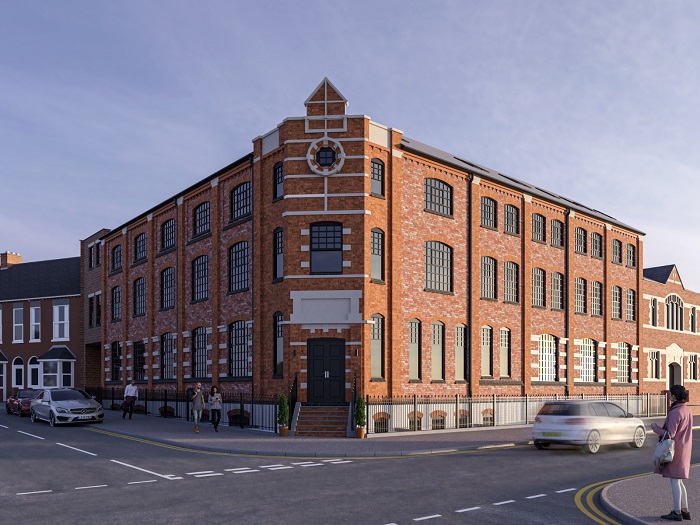The sight of boarded up commercial buildings across towns and villages, often grand beautiful Victorian-era industrial relics in the North of the UK, is a blight on the landscape.

Roxana Mohammadian-Molina, chief strategy officer at Blend Network, speaks to Jessica Bird about the importance - and challenges - of transforming derelict buildings into functioning properties.
Jessica Bird (JB): Tackling the problems caused by derelict buildings and land has long been a key focus of ambitious plans to enhance many towns and villages across the UK. COVID-19, the collapse of well-known retail giants and their subsequent purchase by online-only owners leaving behind 15 million sq ft of empty stores has accelerated the urgency to ‘reinvent’ town centres to avoid what has been called by many the ‘death’ of the high street.
What are the trends that you are witnessing in terms of transforming old redundant buildings?
Roxana Mohammadian-Molina (RMM): What we are seeing is the acceleration of a trend we have been witnessing for some time: the growing demand for UK residential properties has led to an increase in building and developing properties, and property developers are feeling that converting commercial property into residential flats is an effective way to provide more homes for the UK.
This trend has further been boosted by the fact that converting commercial buildings such as offices into residential flats has become easier in recent years.
Developers used to have to secure planning permission to complete their conversion, but in 2015 the government made permitted development (PD) rights permanent. These rights gave developers the freedom to convert offices into homes without needing to apply for planning permission.
Further changes were brought in by the government last year, offering more flexibility to what changes can be made to properties without the need for planning permission.
JB: What are the main challenges of transforming derelict buildings into residential?
RMM: Converting old buildings not currently being used for their original purpose - be it industrial buildings, factories, large office blocks, barns, warehouses, churches, fire stations, or even listed historic buildings - is not a job for the faint-hearted.
Such conversions into liveable homes will often require imaginative plans, experienced architects and surveyors, and large budgets - but chiefly a lender who truly understands conversions.
I would say one of the main challenges of transforming derelict buildings into residential is finding the right lender. High street or mainstream lenders don’t tend to get involved in these types of projects, leaving instead specialist development finance lenders in charge of such schemes.
The truth is that commercial to residential conversion involves having a lender who truly understands such complex schemes and can get their heads around them.
Conversion schemes are rarely standardized one-size-fits-all deals. Traditional lenders are usually happy to lend on off-the-shelf deals that are easy to value based on market comparables. Yet when it comes to non-standard deals in nonstandard locations, specialist lenders are more likely to get comfortable with it provided the deal makes sense.
Luckily for developers, there are a few specialist lenders out there who can be relied upon to lend on such projects. For example, at Blend Network we recently funded a town centre rehabilitation project in Great Yarmouth, helping transform a redundant office block into 30 modern, energy-efficient residential flats.
[caption id="attachment_12494" align="alignnone" width="700"] Crown House, Great Yarmouth[/caption]
Crown House, Great Yarmouth[/caption]
JB: We discussed the challenges, but what are the opportunities and the returns?
RMM: Well, the rewards of bringing derelict buildings back to life can certainly be immense; many of the most beautiful homes in the country are residential conversions of buildings from something completely different to the reason they were originally built.
For example, another scheme we recently funded at Blend Network was the conversion of a grand Victorian boot and shoe factory in Northamptonshire, which had planning to be converted into 24 beautiful, modern and energy-efficient apartments.
The building, on the corner of Mill Road and Strode Road in Wellingborough, is the former Rudlens shoe factory and was built in 1898. As a result of this lending facility, it was saved from decades of neglect by an innovative property developer whose focus is acquiring off-market sites to build design-led energy efficient homes.
As an innovative, tech-powered and regulated specialist lender, this project was right up our street and we successfully funded it during COVID-19.
Of course, we also need to mention the returns achieved by the developers who get involved in such conversion schemes; for example, changing the use of an office and potentially multiplying its rental yields may result in a healthy profit.
[caption id="attachment_12497" align="alignnone" width="700"] Mill Road, Northamptonshire[/caption]
Mill Road, Northamptonshire[/caption]
JB: What are your views on the 'gentrification' of town centres at the hands of developers?
RMM: I strongly believe that we need to crack down on the blight of derelict buildings. The sight of boarded up commercial buildings across towns and villages, often grand beautiful Victorian-era industrial relics in the North of the UK, is a blight on the landscape.
These buildings have the opportunity to become an urban centrepiece, a model for urban regeneration, and ultimately much-needed energy-efficient and sustainable liveable homes.



